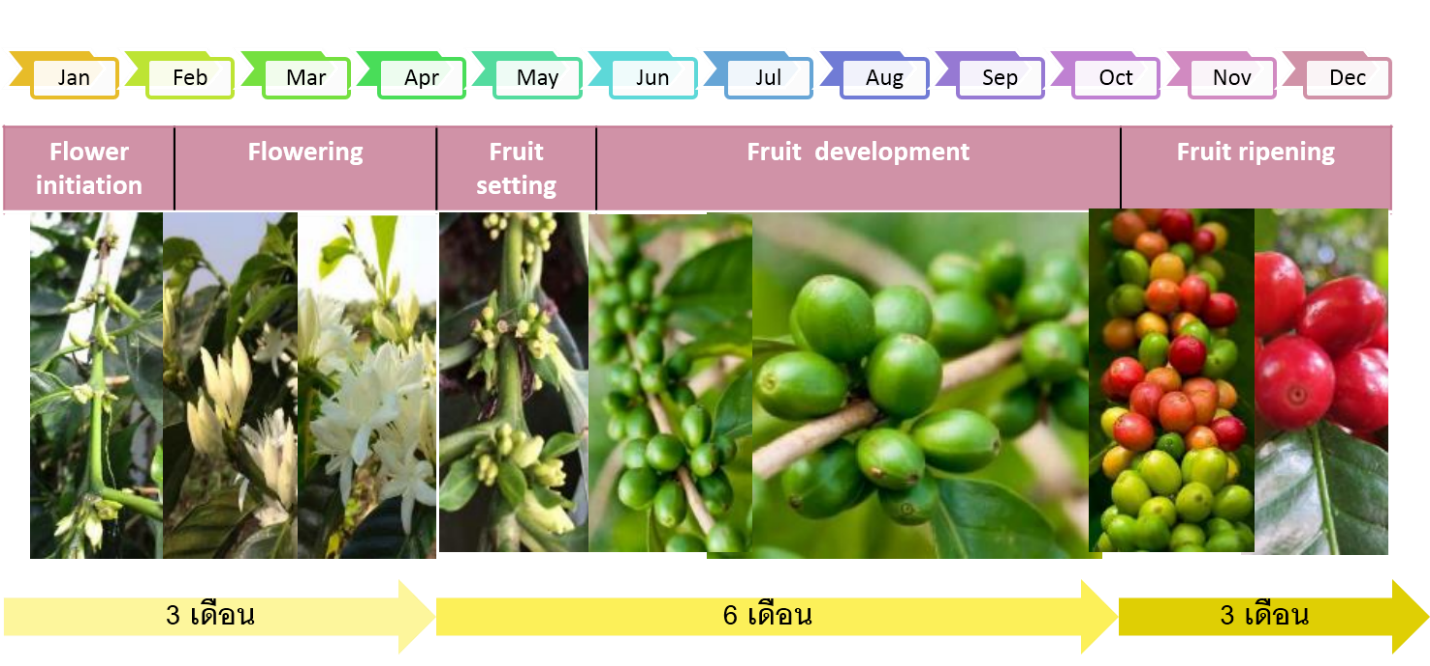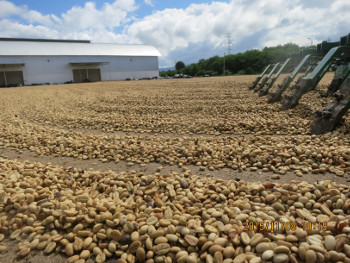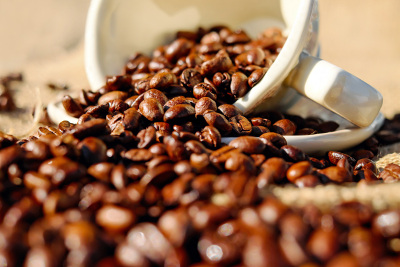Coffee History
In the sixth century, coffee is a plant found in Kaffa, Ethiopia. A man named Kaldi discovered coffee after he noticed that after eating the berries from a certain tree, his goats became so energetic that they did not want to sleep at night. He went out and found that the goat was eating coffee cherries. Then he told the story to a Muslim hermit, who then took the fruit from the tree, and crack the seeds. The hermit roasted and boiled those seeds in hot water to drink, see that it rejuvenated him. Coffee has been then widespread, from the Arabs to Italy, Netherlands, Germany, France and Asia eventually. That is coffee starting point.
Coffee Variety
Normally, there are 2 main varieties of coffee that we are familiar with; they are Arabica and Robusta. More than 70% of coffee beans in the world market is Arabica, 20% Robusta, and the rest are others. Arabica itself can be broken down into a variety of species.
In Paksong plantation, 22 varieties of coffee are selected as follows:
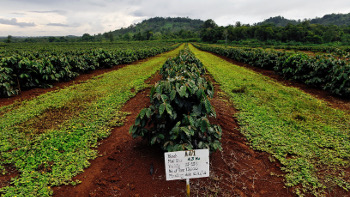 Typica – Origin of Arabica coffee varieties around the world. Coffee stem is high in cone shape with copper tip. Cherries are between its joints. Leaves are small and narrow. Each branch is a bit lengthy. It grows fast, but not resistant to disease. Its height is 3.5 - 4 meters. Seeds are big and turn fully red when ripe. Typica yields not much, and susceptible to rust disease.
Typica – Origin of Arabica coffee varieties around the world. Coffee stem is high in cone shape with copper tip. Cherries are between its joints. Leaves are small and narrow. Each branch is a bit lengthy. It grows fast, but not resistant to disease. Its height is 3.5 - 4 meters. Seeds are big and turn fully red when ripe. Typica yields not much, and susceptible to rust disease.
Initially, tricotica was grown in Yemen and gradually spread to other South American countries, Sri Lanka, Indonesia. Typica was a less productive breed, but the quality is superb, good taste, and aromatic. It is the preference of people who like to have extra coffee.
Cataui – is a coffee cultivar crossed between Mundo Novo and Caturra. The density of branch will help withstand strong wind and rain. However, Cataui is a species that requires much attention. It is widespread all over Brazil.
Bourbon – has green shoots, broad leaves, and shrubs. Its bloom and harvest is a bit later compared with Typica. However, it yields higher, and resistant to disease. It is generally grown in Brazil and Colombia.
Caturra - has green shoots, high yields, good quality, short stems, broad leaves, and small shrubbery. It is generally planted in Brazil.
Mundo Novo - – the growing is widespread. The yield is quite high, susceptible to rust disease. It grows well in the medium to high plantation land.
Catimor – is named after the hybrid, crossed between the Red Caturra and Hibrido de Timor coffee. As a consequent of the hybrid, Catimor becomes resistant to rust disease, and it delivers high yield.
Paksong plantation has grown local coffee variety, SJ133, which has been developed from Catimor. It grows well in Thailand and Lao areas, with high yield, unique coffee fragrance and taste.
The Growth of Coffee Tree
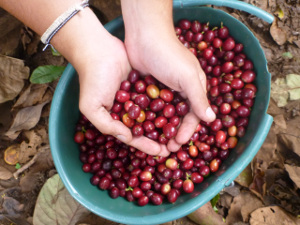
Coffee Processing
is to process the coffee from the cherries to dried coffee or green bean, which is crucial to it taste. The process can be grouped mainly as follows.
Dry / Natural Process
Picked up coffee cherries are sun-dry, and then sent to mill machine for green bean coffee. This traditional processing uses less water, but requires lot of sunlight.
Wet Process
Coffee cherries are cracked and peeled. The beans, with mucilage, will then be fermented in the fermentation pool. The chemical reaction in this fermentation process will decay the mucilage. Then, rinse out the remaining mucilage to clean the beans. This wet process reduces risk of rotten coffee occurred in the dry process. However, rinsing in this wet process will wash away taste and sweetness of the coffee.
Honey Process
Coffee cherries are cracked and peeled. Then the beans with mucilage are sun-dry. The remaining mucilage is considered important in this coffee processing, as it brings natural sweetness.
Coffee Roasting
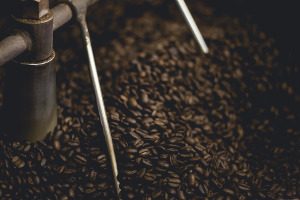 Coffee roasting is both science and art. It relies on the expertise of the roaster. A roaster is required to have good knowledge in terms of coffee. One must be careful, observant, and being through many trial and errors to obtain and record the proper roasting level of each coffee, or so called “Coffee Profile”. With different roasting profiles, coffee, despite of their same source, will be diverged to alternative taste and aroma. Therefore, a coffee roaster must be skillful, and able to keep and control the roasting standards to ensure every coffee bag delivered to the customer meet the standard.
Coffee roasting is both science and art. It relies on the expertise of the roaster. A roaster is required to have good knowledge in terms of coffee. One must be careful, observant, and being through many trial and errors to obtain and record the proper roasting level of each coffee, or so called “Coffee Profile”. With different roasting profiles, coffee, despite of their same source, will be diverged to alternative taste and aroma. Therefore, a coffee roaster must be skillful, and able to keep and control the roasting standards to ensure every coffee bag delivered to the customer meet the standard.
We built our own coffee roasting house in Paksong coffee plantation in Laos. There, we have a coffee roaster specialist, who has got Q Arabica Grader certification, Coffee Quality Institute (CQI) from the Specialty Coffee Association of Europe (SCAE). Furthermore, we have big coffee roaster machine from Germany, Buhler RoastMasterTM20, to best control and maintain our standard of coffee roasting. We consider this process high important.
Additional note:
Q Grader is licensed by CQI, to qualified person who able to evaluate Green Bean. It is required to conduct a qualification reassessment every three years. It is very important for Q Grader to benchmark the coffee or calibration standards on a regular basis.
From green beans to roasted coffee.
1. Selection of raw beans or so called Green bean is based on size, density, moisture, and only selected granules that are complete.
2. Roasting coffee, temperature and time are very important. We can classify the roasting as follows.
Coffee roasting level
1. Light Roast - The light roasting gives the coffee light brown color. There is no seed oil. The temperature is at 350 ° F for about 10-15 minutes.
2. Medium Roast - Coffee with medium roasted. Coffee beans are brown, and it has oil from the seed coating. It is roasted at temperature 400-430 degrees F, for about 15-20 minutes.
3. Dark Roast or Espresso Roast – Suitable for espresso machine. Coffee beans are dark brown, roasted at 450 degrees F for 15-20 minutes.
3. Then the coffee roaster will test the color and tasting the coffee by Cupping method. This is to find any adulterated things in the coffee from that roasting round.
4. Packing and stamp the production date.
